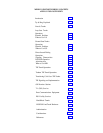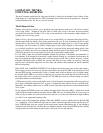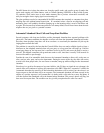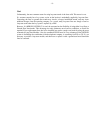-6-
The ARS feature also isolates the station user from the specific trunk, and even the group of trunks. that
carries each outgoing call. Other features. such as Callback Queuing (LEGEND) or Busy-to-Idle (System
25) reminders, allow station users to seize trunks moments after a previous conversation concludes, and
easily fast enough to beat a ringing signal on an incoming call.
The glare problem can also be compounded if the PBX customer has terminals or computers that place
outgoing data calls without human supervision.
If a terminal seizes a line for an outgoing call and
encounters glare it will probably disconnect (hanging up on the incoming caller), record a line failure. and
try again. The data user may become annoyed that a call attempt failed, but will never know about the rude
reception that was just given to a potential customer.
Automated Attendant Ghost Calls and Loop-Start Facilities
Several customers with loop-start facilities and the Automated Attendant have reported problems with
ghost calls. The human attendant who handles overflow calls from the Automated Attendant will notice
that often, when the phone rings there will be no one there. or occasionally the attendant will pick up the
ringing phone and hear dial tone.
The problem is caused by the fact that the Central Office does not send a reliable signal to force a
disconnect at the telephone terminal when only one party on a loop-start line call hangs up. Until the
second party hangs up, the loop-start line is considered in use by the CO, and can not be used to receive a
new call. This happens sometimes with ground-start trunks as well, since there is usually 20-40 seconds for
front end disconnect to pass through.
Consider the case of an automobile dealer that uses the Automated Attendant to direct calls to the new car
sales, used car sales, parts, and service departments. During the course of the day, the alder will receive
several calls from people who, for one reason or another, hang up while waiting for the Automated
Attendant.
Since there is no positive disconnect on loop-start facilities, (the CO does not signal the set to hangup), the
central office will continue to hold up the connection to the PBX. When this “connection” reaches the
Automated Attendant, the usual list of dial-selectable destinations will be recited, but since there is no
longer anyone on the call there will be no response. The Automated Attendant will time out and, in the
absence of a positive response, it will assume that it is dealing with a caller who has a rotary dial phone. It
will then forward the abandoned call to the human backup attendant. This person's phone will ring, but
there won't be anyone there. The condition can also give the perception that the caller was cutoff.


















